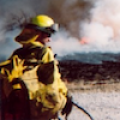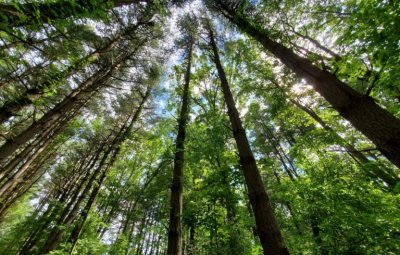It’s a cliché at this point for news articles to compare COVID spread to a wildfire. But the start of meteorological summer in the northern hemisphere this past week coincides with the start of the north American wildfire season, and COVID still rages across the planet, so bear with me a moment for another take on this metaphor.
Even if you’ve never seen a wildfire, you can get a sense of an element of randomness in the flicker of a candle or in the sudden pop of a flaming log in a fireplace. Wildfires show the same behavior, writ large: roiling smoke from your ankles boiling up into the troposphere, tiny twigs aflame you could step on and extinguish, to riotously dancing walls of flame as high as a 10-15 story building. Uncertainty is everywhere.
In my younger days, and long before I started making a living doing statistics in healthcare, I was a wildland firefighter. Firefighting generally relies on physical/deterministic models for predicting fire behavior, and I was constantly playing with modeling software to see what different combinations of weather conditions would do for things like maximum flame height or spreading speed through different types of ecosystems. And after a fire, I would take the weather readings we’d taken during the incident and plug them into the same models, to see how well the predictions (given the actual conditions) matched my experience on the fireline.
If you squint at the picture below, you might see the pair of firefighters to the lower right of the smoke plume and along a dirt road marking the fireline; the size and randomness of the flames to the left are fairly apparent. Sure, there’s some uncertainty, but the speed and maximum height of the flames were fairly well predicted by my models. So, some certainty can be drawn from randomness, with good models at least.
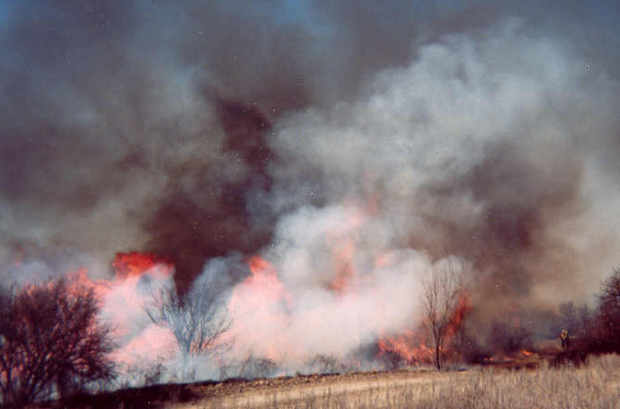
One of the things that’s hardest to understand until you experience it is just how hot a wildfire is. You expect it to be hot, of course—it’s fire, after all. But the heat put out by an extensive barrage of flame is something else entirely, and there’s nothing in this world I’ve experienced that can compare. With my models, I could calculate differences in BTUs/ft2/minute given different conditions—confidence bounds, if you will—but I could never experience those distinctions in real life. Just a singular feeling of the blistering pressure from tremendous volumes of radiant heat, felt even from several meters away from the nearest flames, regardless of vegetation or weather. The maximum expected heat output can be well predicted from my models, but in practice it’s all but irrelevant to those standing near the flames. No one cares about uncertainty when all there is, is hot.
Parents of young children move far faster to avert their toddlers from accidental burns than they do to prevent colds. Perhaps a quick accidental touch of a hot pan gives you a sense for the intensity of pain that heat can deliver in an instant of contact, and kids usually only make that mistake once. But colds? Some half-hearted attempts to ensure they wash their hands or don’t pick their nose… and then: “It’ll improve their immune system!” the parents say, after the inevitability of an infection renders the viral transmission avoidance point moot. Colds don’t have the aversion response that heat does.
So (again) here collides the ideas of wildfire and viruses. Sure, COVID spreads fast amongst humans (its fuel) like wildfire through dry tall grass, snuffing out life as it goes, and while tired, the metaphor is apt. But in terms of the human psyche, the metaphor breaks. Americans, in particular, have shown astonishing levels of indifference to this virus, much as parents do with their toddler’s common cold. Perhaps that’s in part due to many sources of uncertainty—and some overt misinformation (lies, we might more accurately say)—about the risk of catching it, the hazard if it’s caught, the invisible nature of viruses. The chill and burn of fever only felt by those a week or so ago infected, with outcomes uncertain. Once sick, you could die, or you could be just fine. Maybe no one cares about the uncertainty here because all there is, is uncertainty.
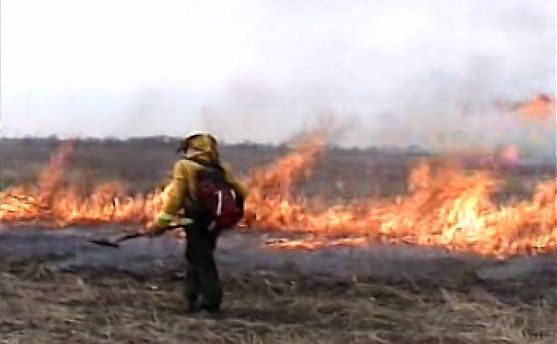
What’s actually dangerous? Wildfire can be predictable amidst what seems like a plume of ambiguity and randomness. Sure, it’s inevitably fatal if you are trapped by it, but its predictability allows most the opportunity to evacuate and get out of its way. The COVID pandemic, so far, has proven far less predictable. Perhaps that’s because we have a lot more knowledge of wildfire than we do of pandemics, though even then, the evidence is pretty clear that a pandemic is far more dangerous, on the whole, than wildfire. So not unexpectedly, stats of COVID cases and deaths fill the pages of news outlets worldwide, while stats around wildfire are almost never reported. The United States has more wildfires to date this year than any year since 2011, although I have yet to see a wildfire news item come across my feed. Meanwhile, claims of “I’ll be fine, I have an immune system!” fill the social media of the recently deceased from COVID, sometimes reported dutifully by local news.
We statisticians make our living quantifying uncertainty, but attempts by our field to instill a sense of urgency in the public about the danger of this pandemic—often by modeling and predicting population cases and deaths, or sharing statistics on vaccine efficacy—have seemingly failed. Why? I have no idea. Perhaps it’s because the very idea of uncertainty is, well, uncertain. While 70 to 95% efficacy is a huge success story to epidemiologists, it sounds like the difference between an A and a C grade to the average American, even though that’s not at all what efficacy means. What’s the risk from dining out? A probable infection to some is a slight-to-no chance to others, based on seemingly arbitrary criteria.
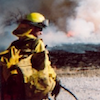
To a firefighter on the line, the heat and danger of a wildfire is self-evident. A good firefighter often knows when to take their escape route, leave the fire, and head to safety. Tragedies occur, some immortalized in prose as well as in government reports, but the scales are small, intimate, and personal. But the hazard is also clear to anyone who’s ever been burned by a hot stove. To most of the world, the danger of a deadly virus seems, incredibly, not self-evident at all, the risk apparent only to those with a working (mental) model of viral spread. Unlike wildfire, it’s an invisible conflagration.
Uncertainty is a funny thing. Sometimes it matters a great deal, sometimes not at all.
“Probably most catastrophes end this way without an ending, the dead not even knowing how they died… those who loved them forever questioning ‘this unnecessary death,’ and the rest of us tiring of this inconsolable catastrophe and turning to the next one.”
Norman Maclean, “Young Men and Fire”

